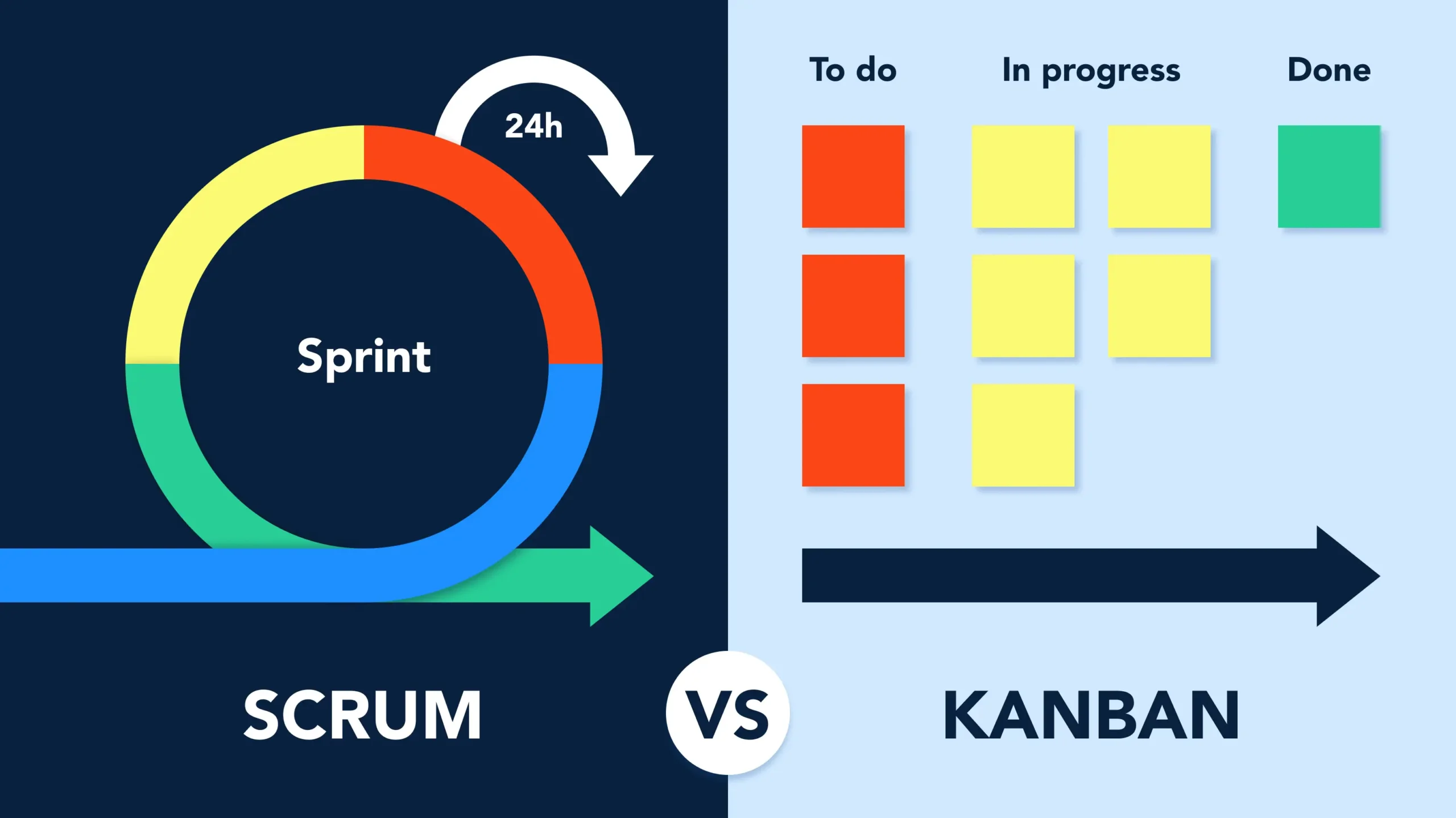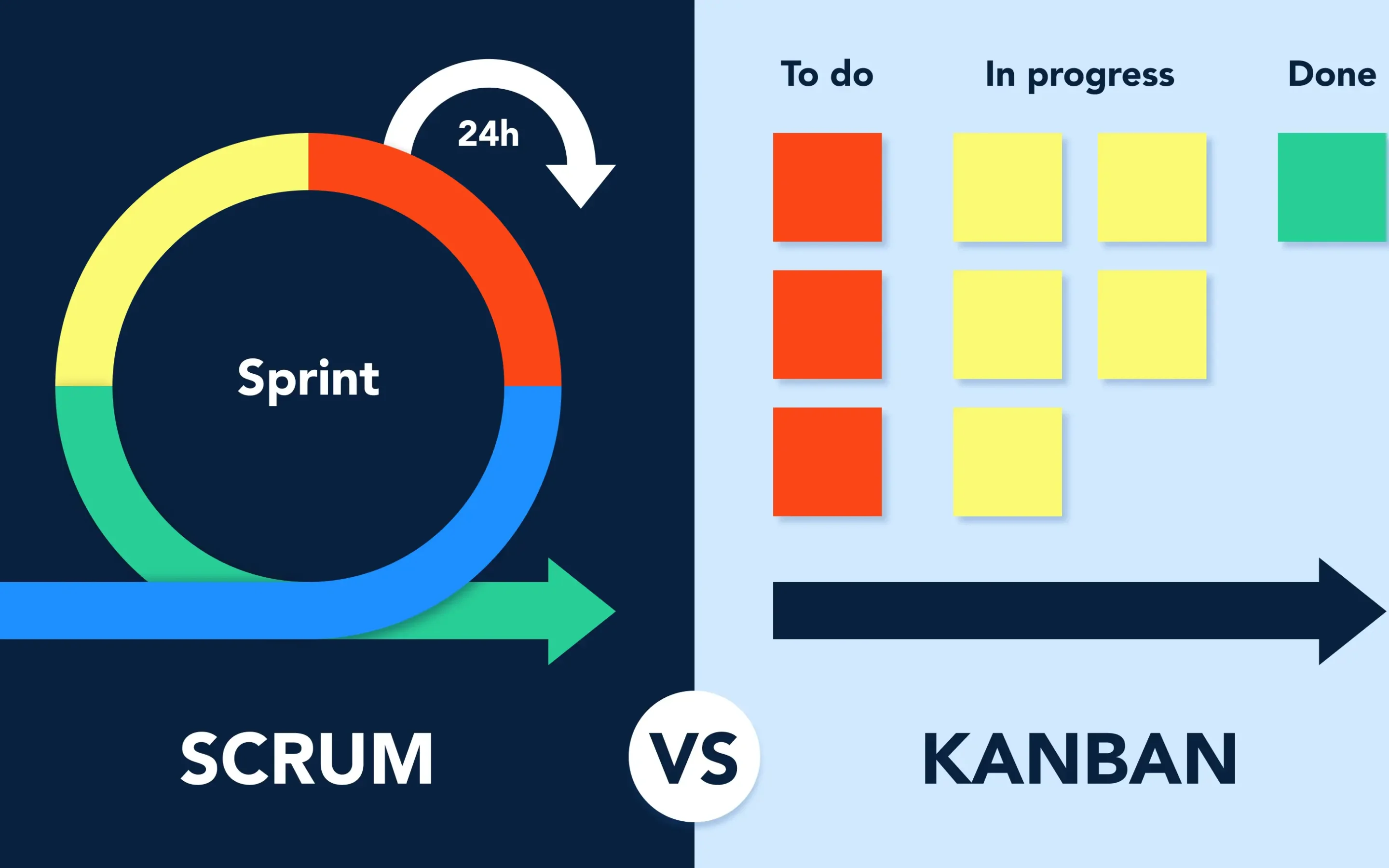What is the Agile Framework in Project Management?
The Agile Framework is a set of principles and practices for software development and project management. It was created to address the challenges of traditional project management methods, which often relied on detailed planning and documentation, with little flexibility to adapt to changing project requirements.
Core Principles of Agile Project Management
The Agile Framework emphasizes collaboration, continuous improvement, and delivering value to the customer through incremental improvements and frequent feedback. It is based on the Agile Manifesto, which outlines the core values and principles of the Agile Framework.
The Agile Framework is often associated with software development, but it can be applied to a wide range of projects and industries. It includes various methodologies, such as Scrum, Kanban, Lean, and others, each with its own unique set of principles and practices.
Agile Project Management Principles
Some of the key principles of the Agile Framework include:
- Prioritizing customer satisfaction through early and continuous delivery of valuable software or products.
- Embracing change and being responsive to changing requirements.
- Delivering working software or products frequently, with a preference for shorter timeframes.
- Collaborating closely with customers and stakeholders throughout the project.
- Building projects around motivated individuals and giving them the tools and support they need to succeed.
- Focusing on delivering a working product or software, rather than comprehensive project management documentation.
- Striving for excellence and continuous improvement through regular reflection and adaptation.
Applying Agile Practices Across Projects and Industries
The Agile Framework is a customer-focused, iterative approach to project management that values collaboration, flexibility, and continuous improvement. It is designed to help project teams work more efficiently, reduce costs, and deliver better results.
What are the Key Elements of Agile Project Management?
Agile Project Management emphasizes flexibility, collaboration, and value delivery through iterative planning, cross-functional teamwork, and continuous improvement.
Thanks to task prioritization, embracing change, and focusing on quality, teams can efficiently meet project goals while adapting to feedback and evolving requirements.
1. Iterative planning and delivery
Instead of planning the entire project upfront, teams plan and deliver the project in small, incremental stages or sprints. This allows for feedback and adjustments throughout the project lifecycle, which is critical during agile sprint planning.
2. Collaborative and self-organizing teams
Teams are cross-functional and self-organizing, with members from different areas such as development, design, and testing. Teams work closely with the customer or product owner to ensure that the project meets the customer’s needs.
3. Continuous improvement and adaptation
Agile Project Management emphasizes continuous improvement and adaptation, with regular retrospectives to evaluate the team’s performance and identify areas for improvement.
4. Emphasis on delivering value
Agile Project Management focuses on delivering value to the customer through working software or other tangible outputs. This is achieved by prioritizing tasks and features based on their value to the customer.
It is a flexible and adaptive approach to project management that allows teams to deliver value to the customer in a collaborative and iterative manner.
Agile Project Management – 8 Best Practice Tips
To achieve success with agile project management, it’s essential to implement best practices that enhance collaboration, flexibility, and value delivery.
1. Start with a clear understanding of project goals and requirements
Make sure that all stakeholders are aligned on project goals, objectives, and requirements. Define the scope of the project and identify the key deliverables.
2. Establish a cross-functional team:
Create a cross-functional team with the necessary skills and expertise to execute the project. Ensure that team members are dedicated to the project and are aligned on project goals.
3. Use an iterative approach
Break the project down into smaller, more manageable pieces and work on them in short iterations. This allows for early and frequent feedback and helps to ensure that the project stays on track.
4. Prioritize work
Use a backlog or list of prioritized work items to ensure that the team is focused on the most important tasks. Prioritize work based on business value, complexity, and dependencies.
5. Embrace change
Be open to changing requirements and be prepared to adapt as the project progresses. Use feedback to identify areas for improvement and adjust the project plan accordingly.
6. Focus on quality
Quality is a key aspect of agile project management. Make sure that the team is using best practices for testing and quality assurance, and that the project is delivered to a high standard.
7. Communicate regularly
Communication is critical to the success of agile project management. Ensure that the team is communicating regularly, sharing progress updates and identifying any issues or roadblocks.
8. Use agile project management tools
There are many tools available to support agile project management, such as Jira, Trello, and Asana. Choose the tools that best fit your team and project, and use them to track progress, manage tasks, and collaborate with team members.
The key to successful agile project management is to be flexible, collaborative, and focused on delivering value to the customer. By following these best practices, teams can work more efficiently, reduce costs, and deliver better results.
What are the Benefits of Agile for Project Management
Agile project management enhances flexibility, speeds up delivery, improves quality, boosts collaboration, and increases customer satisfaction. It also promotes transparency and reduces risk, leading to more efficient, cost-effective, and successful project outcomes.
1. Increased Flexibility
Agile project management allows for more flexibility in project planning and execution, making it easier to adapt to changing requirements and stakeholder needs.
2. Faster Delivery
Agile project management encourages shorter development cycles and frequent releases, allowing teams to deliver projects faster and with greater efficiency.
3. Improved Quality
With agile project management, there is a greater focus on continuous improvement and testing, which helps to improve the quality of the final product.
4. Increased Collaboration
Agile project management encourages collaboration and communication among team members, project stakeholders, and customers, leading to better alignment and a greater understanding of project goals.
5. Higher Customer Satisfaction
Agile project management focuses on delivering value to the customer through incremental improvements and frequent feedback, resulting in higher customer satisfaction and greater loyalty.
6. Greater Transparency
Agile project management emphasizes transparency, making it easier to track progress, identify potential issues, and make necessary adjustments in real-time.
7. Reduced Risk
Agile project management allows for greater visibility into potential risks and issues, allowing teams to proactively address them before they become major problems.
Agile project management can help teams to work more efficiently, reduce costs, and deliver better results.
What is the difference between Agile and Scrum Methodologies?
There are two established Agile methodologies that have proven the most popular amongst project managers.
Let’s take a closer look at Scrum and Kanban and the differences between Scrum and Kanban.
Agile Scrum Project Management
Agile Scrum project management is a popular framework that focuses heavily on iterative or incremental projects of all types. This focus allows Scrum to deliver the optimal business value in the shortest time possible. All iterations or increments should always have a well-defined goal. These goals can be changed throughout the project, from iteration to iteration.
Key Roles and Responsibilities in Scrum
Within Scrum, the product owner or ‘Scrum Master’ works closely with the team to create a product backlog. From this, they can prioritize system functionality. The Scrum framework emphasizes continuous feedback and iteration, ensuring that priorities remain aligned with project goals.
Cross-Functional Teams and Sprint Execution
Once priorities are established, cross-functional teams deliver working products within a Sprint. Sprints usually last 2 to 4 weeks.
Just like a rugby Scrum, where team members group together to gain possession of the ball, Scrum Agile Project management depends entirely on cross-functional teamwork. Solutions to problems are derived from team collaboration.
Scrum Ceremonies – Driving Collaboration and Transparency
This collaboration manifests in the form of Scrum ‘ceremonies’:
- Sprint planning
- Sprint demo (work completed in a sprint)
- Daily stand-up
- Sprint review/retrospective.
Tasks are managed on Scrum Boards (not to be confused with Kanban Boards which we will discuss later) with lists for ‘to-do’, ‘in progress’, and ‘done’.
Adaptive and Iterative Development in Scrum
Scrum Project Management is based on the adaptive and iterative methodology, allowing teams to continuously refine and improve both processes and products. This iterative approach ensures that teams remain responsive to changes and can deliver consistent value.
Kanban Project Management
The other most popular agile framework is Kanban. Kanban translates to “visual signal” and originated on the Toyota factory floor in the 1940s. It was developed as an ordering or planning system. The original aim was to optimally manage work and inventory at every stage of the manufacturing production. Today, Kanban software development uses this concept to optimize work and improve productivity.
Adapting Kanban for Agile Project Management
By controlling the flow of work, bottlenecks in production are avoided. Adapting this thought process for Agile project management allows fast development with an emphasis on optimized, continuous flow. Once a task in progress is completed, developers simply pull new work from a queue.
The Kanban Board – Visualizing Workflow and Progress
As its name implies (‘visual signal’ or ‘billboard’), Kanban is entirely based around the Kanban Board. A Kanban board consists of columns to visualize and track progress. It uses cards, columns, and just-in-time continuous improvement to help development teams commit to the right amount of work and get it done.
Enhancing Kanban with Swimlanes and WIP Limits
You can also use horizontal swimlanes to categorize your work further. To ensure the right amount of time is allocated to tasks and that no one team member is overwhelmed, we need WIP limits. A WIP, or ‘Work-in-Progress’ limit restricts the number of tasks in progress to what is manageable. This is usually 3 tasks in progress at any time.
Benefits of Kanban for Project Management
The Kanban framework is highly adaptable and focuses on continuous delivery. Visualizing tasks and managing work with clear limits allows teams to maintain a steady flow, ensure quality, and respond quickly to changing project needs.
Scrum and Kanban: Which Is Better For You?
As we outlined before, Agile is to be interpreted rather than rigidly followed and it is up to you to decide what elements of Scrum and Kanban you wish to follow. Each project methodology type has its own strengths, depending on your specific project needs.
Here are the main differences.
- Sprints vs Continuous Flow
Scrum focuses on sprints that are a set period of time whereas Kanban cadence is focused on consistent and continuous workflow.
- Speed vs Improvement
Scrum methodology typically tackles complex knowledge work, such as software development. Kanban is primarily concerned with improvements to processes, while Scrum emphasizes quicker production.
- Planning and Estimation
Scrum stresses planning, starting with sprint planning and ending with sprint retrospective. Kanban is less rigid and more open to making changes frequently on the fly.
- Roles of Team Members
The Scrum Master acts as the chief problem solver, unlike Kanban where every team member shares responsibility and leadership.
- Stable priorities vs. Regular changing focus
Kanban works best for teams with stable priorities that are unlikely to change over time. Scrum allows for changing priorities from sprint to sprint.
- Key Metrics
Velocity is the key metric to Scrum while Lead time, cycle time and Work in Progress are most important to Kanban.
Make Project Management easier with Microsoft Teams and BrightWork 365
Watch a demo of BrightWork 365 project and portfolio management templates for Microsoft 365, Power Platform, and Teams.


